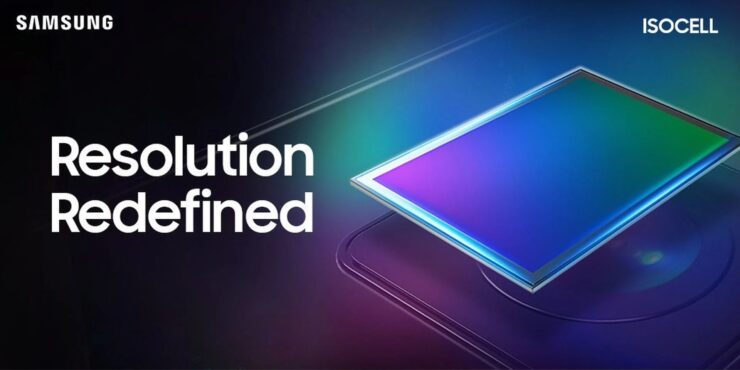Samsung has long been a pioneer in the smartphone industry and its advancements in camera technology are a testament to its commitment to innovation. From its initial ISOCELL sensors to its latest high-resolution cameras Samsung has continually enhanced the quality and functionality of its camera systems. This article will delve into the evolution of Samsung’s camera technology highlighting key milestones and explaining the features that make their cameras some of the best in the industry.
What Are ISOCELL Sensors?
ISOCELL is Samsung’s proprietary technology designed to improve image quality in smartphones. Introduced in 2013 ISOCELL sensors use advanced pixel isolation technology to enhance the performance of camera sensors. The term “ISOCELL” stands for “isolated cell” which refers to the sensor’s ability to reduce crosstalk between neighboring pixels. This isolation helps to prevent color distortion and improve overall image clarity.
How ISOCELL Sensors Work
Traditional camera sensors can suffer from issues like color bleeding and reduced image quality in low light conditions. ISOCELL sensors address these problems by incorporating a barrier between individual pixels. This barrier made of a material called an “insulator” helps to prevent light from leaking between pixels thus improving color accuracy and reducing noise in images.
Key Benefits of ISOCELL Technology
- Enhanced Low-Light Performance: By minimizing light leakage and reducing noise ISOCELL sensors deliver clearer images in low-light conditions.
- Improved Color Accuracy: The isolation of pixels ensures more accurate color reproduction resulting in vibrant and true-to-life photos.
- Reduced Crosstalk: The technology reduces crosstalk between pixels which helps to maintain image sharpness and detail.
The Push for Higher Resolution
As smartphone cameras have evolved there has been a significant push towards higher megapixel (MP) counts. Samsung has been at the forefront of this trend continually developing sensors with increasingly higher resolutions. This focus on high MP cameras is driven by the desire for more detailed and clearer images as well as the ability to crop and zoom without losing quality.
Samsung’s Milestones in MP Technology
- 12 MP Cameras: Early high MP sensors such as the 12 MP cameras found in Samsung’s Galaxy S5 marked a significant leap in image resolution and detail.
- 48 MP Sensors: With the introduction of the Galaxy A70 Samsung began incorporating 48 MP sensors offering even greater detail and clarity.
- 108 MP Sensors: Samsung’s flagship Galaxy S20 Ultra and subsequent models featured a groundbreaking 108 MP sensor setting new standards for smartphone camera resolution.
Benefits of High MP Cameras
- Greater Detail: Higher MP cameras capture more details allowing for larger prints and more in-depth cropping.
- Improved Zoom Capabilities: Higher resolution enables better digital zoom capabilities reducing the loss of detail when zooming in on a subject.
- Enhanced Low-Light Performance: More pixels can gather more light improving the camera’s performance in dimly lit environments.
Advanced Technologies and Innovations
Dual Pixel Technology
Samsung’s Dual Pixel technology is another significant advancement that enhances autofocus performance. Unlike traditional sensors Dual Pixel sensors have two photodiodes per pixel allowing for faster and more accurate phase detection autofocus. This technology is particularly useful for capturing fast-moving subjects and ensuring sharp focus in various lighting conditions.
Super Steady Video
Samsung’s Super Steady technology utilizes advanced image stabilization techniques to reduce video shake and provide smoother footage. This feature is particularly beneficial for capturing action shots and recording videos while on the move. By combining hardware and software stabilization Samsung ensures that videos remain steady and clear even in challenging conditions.
Sensor-Shift OIS
Sensor-shift optical image stabilization (OIS) is another innovation that Samsung has integrated into its high-end smartphones. Unlike traditional OIS which stabilizes the lens sensor-shift OIS stabilizes the camera sensor itself. This approach provides even greater stability and reduces the impact of hand movements resulting in sharper images and smoother videos.
The Future of Samsung’s Camera Technology
AI and Computational Photography
Artificial intelligence (AI) and computational photography are becoming increasingly important in smartphone camera technology. Samsung has been incorporating AI algorithms into its camera systems to enhance image quality, automate scene detection and provide real-time enhancements. Features like AI-powered scene optimization and portrait mode are examples of how Samsung is leveraging AI to improve the overall camera experience.
Folding and Periscope Cameras
As smartphone designs continue to evolve Samsung is exploring new camera form factors such as folding and periscope cameras. Folding cameras allow for innovative designs and improved versatility while periscope cameras offer advanced optical zoom capabilities without increasing the thickness of the device. These technologies represent the next frontier in smartphone camera innovation and are likely to play a significant role in Samsung’s future camera offerings.
Conclusion
To check this site for the latest advancements in smartphone camera technology, you can see how Samsung has evolved from its early ISOCELL sensors to the current high megapixel cameras. By continually innovating and enhancing image quality, Samsung has established itself as a leader in the smartphone camera market. Whether it’s through advanced sensor technology, high-resolution cameras, or cutting-edge features like AI and sensor-shift OIS, Samsung continues to push the boundaries of what is possible in mobile photography.
As smartphone technology evolves Samsung’s focus on delivering exceptional camera experiences will likely lead to even more groundbreaking advancements in the future. For consumers this means continued access to high-quality versatile and powerful camera systems that make capturing and sharing moments easier and more enjoyable than ever before.





